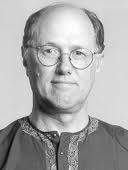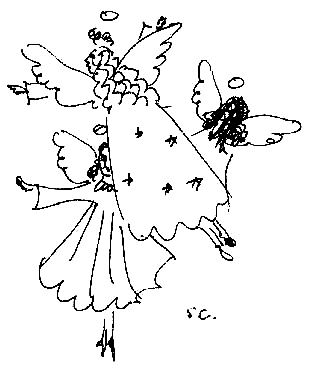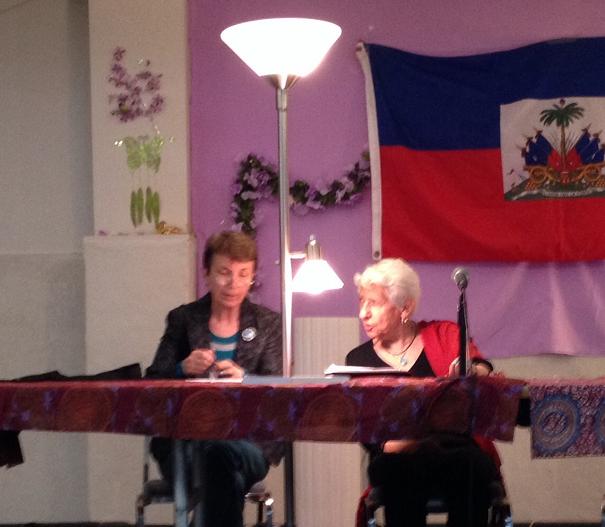Speech for UNA Council of Organizations Sep 28, 2015 “Achieving the Goals of the UN” event at the Unitarian Universalist Church at Franklin and Geary in San Francisco.
by Roger Eaton UNA-SF Communications Chair. rogerweaton@gmail.com 415 933-0153
The 17 Sustainable Development Goals (SDGs) with 169 targets were adopted at a United Nations Summit, Friday, September 25, 2015. The finalized text of the SDGs is only 30 pages – must reading, please! And we must not forget the other great goals of the UN: to end the scourge of war, complete and general disarmament, nuclear disarmament, human rights, global security and a fully respected system of international law. Indeed, achieving the great earlier goals of the UN would seem to be a prerequisite for achieving the SDGs or at least go hand in hand with them. How can the world cooperate wholeheartedly on anything so long as major countries have nuclear arms at hair trigger, targeted at each other’s major cities?
Together, the goals of the UN are a formidable platform for local-to-global organizing. Achieving them will require a huge common effort at every level. Skepticism abounds, but achieve them we must for the sake of Earth and humanity, so people everywhere will be looking for ways to connect and cooperate on the venture.
Government and civil society organizations at every level will see the momentum building and will think in terms of aligning themselves with the SDG/UN Goals movement. And what is true of government and civil society is also true of private investment. Consider, please, if you had money to invest, would you put it in oil or coal or weapons companies? Or would you put it in currently under-invested SDG related sectors such as renewable energy, transportation, water and sanitation — sectors which especially in developing countries currently have low levels of socially responsible private investment? If you have a ten or fifteen year plan, better go with the SDGs. There is going to be a global push targeting the SDGs especially in developing countries, and there is not enough public investment to get the job done, so government and civil society are going to create partnerships with socially responsible for-profit companies. It is a huge opportunity.
There is a missing element, though, if we look just at the SDGs. To achieve the SDGs, we need to redirect military investment into the SDG sectors. It is partly a matter of the cost of the weapons, which is immense, but even more importantly, nuclear weapons divide the world creating an overall sense of distrust and fear. With the nations in us-vs-them mode, thinking how to turn every immediate situation to their own best advantage, we will never be able to cooperate as we must to achieve the SDGs. And without moving towards complete and general disarmament, we will never get nuclear disarmament because the U.S. has such a commanding lead in conventional weapons and military bases around the world. The only way forward is to build a sense of human unity that can override the fear (and the greed) that underpins the military sector.
This is where Voices of Humanity finds its role as a local-to-global network facility for the SDG movement which at the same time will build a heartfelt sense of human unity.
Voices of Humanity is an online community where the genders and generations will weave a crowd-sourced tale of love and wit, remaking humanity’s vision of itself in the process. Through this new lens, the human race will see itself as the intelligent, generous and capable species that we are, building the trust and confidence we need to cooperate on pressing global matters.
Each month, community members write messages in response to the winning messages from the previous month. They trade these messages around and vote to elect six messages to represent Humanity-as-One, Women, Men, Youth, Middle-age (Voice of Experience) and Seniors (Voice of Wisdom). Each of these Voices has its own perspective and at the same time fully participates in our larger unity.
Voices of Humanity will fulfill our great unmet social need for a global consciousness that builds unity and morale while respecting diversity. The crowd-sourced Voice of Humanity-as-one is central to the design, but the dialogue between the Voice of Humanity and the Voices of Women, Men, Youth, Experience and Wisdom, will be a spirited and suspenseful exchange, not a series of pronouncements from above as it might be if we had only a single Voice of Humanity instead of the six Voices of Humanity.
People are ready. Everywhere we are looking for a way to unite which opens up our options instead of closing them down. We very much do recognize our interdependence. We are all part of the web of life (thank you, Fritjof Capra), but we want to maintain our independence as well, individually, nationally and in our many cultural and religious identities. Voices of Humanity is designed for the job.
The positives and negatives of the Voices of Humanity software need mention. The software is open source, which is a positive, but it is also very much a prototype needing lots of work. At its heart is the monthly cycle of crowd-sourced messages, which needs a complete makeover of its user interface. Then there is the social media setup with the ability to follow people and to post to your “wall” and so forth, which is very rudimentary at this point. Finally, there is a listserve capability for groups and their sub-groups, which also needs many additional features if it is to be adopted by established nonprofits.
Amongst the positives are a structure that a) has gender equality built in and b) naturally tends to marginalize hardliners of all sorts. Indigenous, Minority, Interfaith, Refugee and Veterans check boxes along with a local-to-global geographic levels are expected in the next month or so. Also, coming soon, hierarchical hashtags that can be applied by the participants to themselves as well as to their postings. These hierarchical hashtags will enable the SDGs to be handled systematically. Winning messages from the six voices of humanity will be consistently intelligent, kind and spirited because these are the messages that people everywhere appreciate. This is us, people will say each month as they read the highly rated messages, and that recognition of humanity’s good nature is at the top of the list of positives for Voices of Humanity.
Together, the six Voices of Humanity, the Indigenous, Minority, Interfaith, Refugee and Veteran check boxes, the hierarchical hashtags and the local-to-global geographic levels make the Voices of Humanity software a flexible tool for uniting humanity. The tricky thing to realize is that the six Voices will have winning messages each month at every level. Thus, the Voice of Women from the Central African Republic will have something to say each month, and so will the Indigenous Youth of Quebec. Moreover, winning messages will often be in reply to winning messages written the previous month by an entirely different group at a different level.
It is worth saying it again: Voices of Humanity is an online community where the genders and generations will weave a crowd-sourced tale of love and wit, remaking humanity’s vision of itself in the process.
There are a couple more hurdles. We need funding, and we need a better incentive for the individual to participate, especially here at the beginning stages before critical mass is achieved and before the user interface has been upgraded. The plan is to implement a crowdfunding initiative called “Make Your Gift Work Twice”. Money donated under this plan will be tax deductible. Ten percent will be retained to fund development of Voices of Humanity. The author of the winning message for the Voice of Humanity-as-One each month will name a nonprofit to receive the remaining ninety percent of the money. This plan will incentivize both individual and organizational participation. Over time a system of participant points will be implemented and the crowdfunded income each month will be distributed to the nonprofits according to the points earned by their “champions”.
Voices of Humanity has already launched. You can easily find it online. See http://ugc.sfcoo.intermix.org. You are more than welcome to participate. The first month’s winners will be selected at the new moon on January 10, 2016. We have a way to get the winning messages onto the desk of Dr. Mlambo-Ngcuka, the Executive Director of UN Women, though at this point we cannot be sure she will respond.
Thank you so much!








